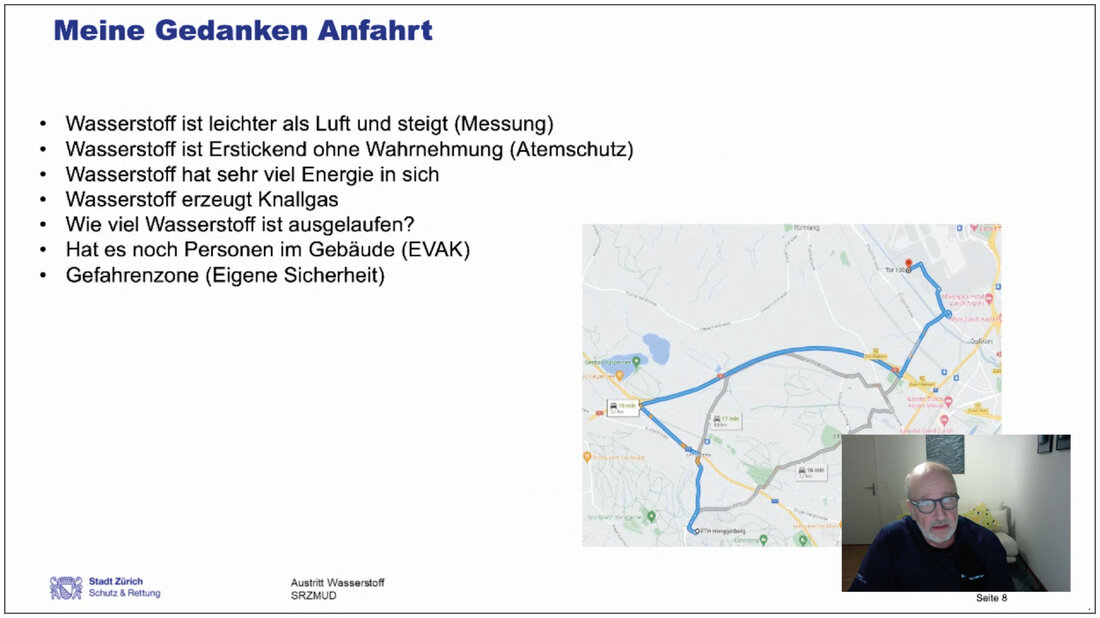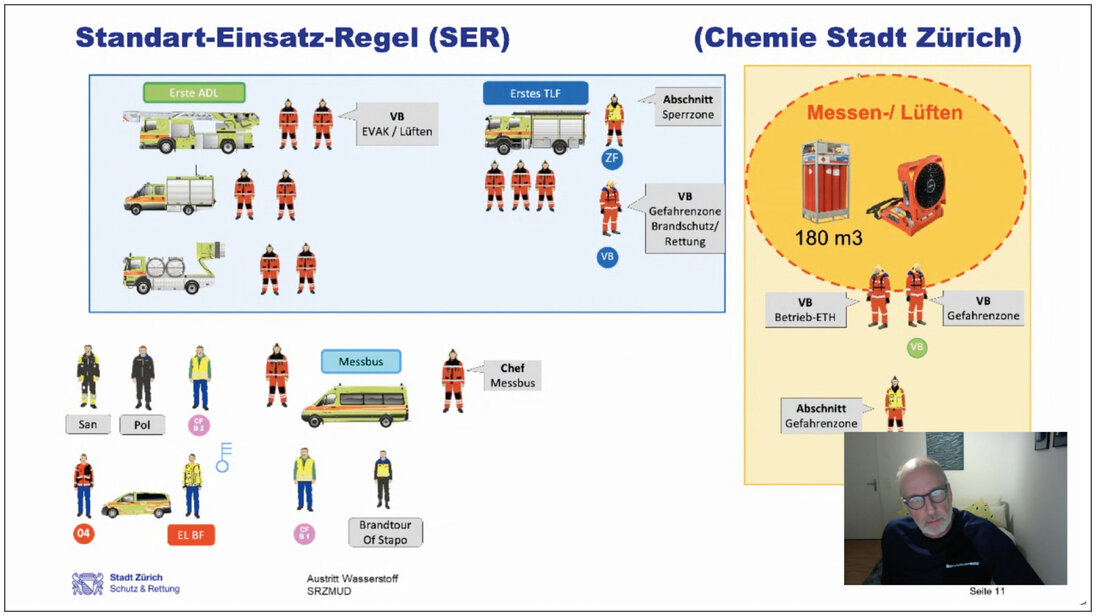At 0:55 a.m. on 21 June 2023, the alarm was raised at the Swiss Federal Institute of Technology (ETH) Zurich: Hydrogen leakage in the compressor room on the 2nd basement floor. The initial measures were immediately apparent for Daniel Münzenmayer, a member of the Zurich professional fire service for 37 years. He summarises how he experienced the deployment in his report.
Standard operating procedure is the basis
Münzenmayer's initial considerations centred on the properties of hydrogen: As it is lighter than air and rises, measurements must be taken immediately. Hydrogen has a suffocating effect without it being perceived. Therefore, it is necessary to work with breathing apparatus. But what about the evacuation of the building? And how large is the threat zone to be set up for your own safety?

The professional fire service of Schutz & Rettung Zurich also has a standard operating procedure for deployments involving hydrogen. The SOP already stipulates that an explosion-protected large mobile ventilator is to be requested. In addition, knowing the experts at ETH personally from many training drills and working closely with them on this operation has proved its worth. They know the building and all the technical systems and are equipped with special hydrogen measuring devices.

By working together with the experts, it was possible to systematically eliminate all ignition sources while constantly measuring the hydrogen concentration in the air and proceed to the compressor room. In order to ventilate the room, the access door had to be opened to get into the adjoining room. It was the crucial step. «We didn't know: Is there a little cat or a tiger behind it?» Daniel Münzenmayer metaphorically describes the situation. The hydrogen measuring device had a long sensor so that the door only had to be opened minimally and could be closed again immediately after the measurement. Only then did the situation relax: Only a low concentration of hydrogen was detected. The challenging mission was completed safely.


